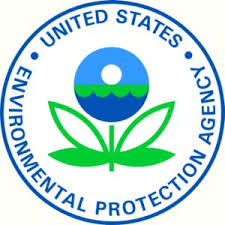 After a record 136-day confirmation battle, Regina McCarthy became the 13th administrator of the Environmental Protection Agency (EPA) on July 18, 2013. At her first public speech as administrator two weeks later, McCarthy told a crowd at Harvard Law School that regulating greenhouse gas emissions and other pollutants “will spark business innovation, will grow jobs, and will strengthen the economy.” The mission of the agency she now heads is simply stated: “to protect human health and the environment.” Yet the often-controversial EPA encompasses an astounding range of responsibilities, from ocean floor Superfund cleanups to stratospheric ozone protection.
After a record 136-day confirmation battle, Regina McCarthy became the 13th administrator of the Environmental Protection Agency (EPA) on July 18, 2013. At her first public speech as administrator two weeks later, McCarthy told a crowd at Harvard Law School that regulating greenhouse gas emissions and other pollutants “will spark business innovation, will grow jobs, and will strengthen the economy.” The mission of the agency she now heads is simply stated: “to protect human health and the environment.” Yet the often-controversial EPA encompasses an astounding range of responsibilities, from ocean floor Superfund cleanups to stratospheric ozone protection.
For FY2014, President Obama proposed an $8.153 billion budget for the EPA (down $296 million compared with FY 2012). The agency employs about 17,000 federal workers and occupies 175 facilities around the country, some owned by the EPA, some owned or leased by the GSA, and some leased directly by the agency. The William Jefferson Clinton Building North and South, awarded LEED-Silver certification for existing buildings in July, is part of EPA’s sprawling headquarters complex in the Federal Triangle of DC. Other facilities include 10 regional offices (6 out of 10 are LEED certified), research centers such as the National Vehicle & Fuel Emissions Laboratory, the Caribbean Environmental Protection Division and the ocean and coastal monitoring vessel, Bold.
The EPA emerged from public outrage over threats to human health posed by accelerating use of pesticides and other toxic chemicals after World War II. The 1962 publication of Rachel Carson’s Silent Spring sparked activism that culminated in the National Environmental Policy Act of 1969 (NEPA). The legislation required all federal agencies to begin submitting environmental impact statements and directed the president to assemble a Council on Environmental Quality to gather data and advise on policy. Richard Nixon signed the act into law on New Year’s Day, 1970, and, that spring, proposed the creation of a regulatory agency to establish environmental standards, conduct research on adverse effects of pollution and improve environmental policies. The Federal Water Quality Administration of the Interior Department, the National Air Pollution Control Administration from the Department of Health, Education and Welfare and pesticides research responsibilities of the Food and Drug Administration were among the departments and bureaus to be reorganized into the Environmental Protection Agency. Hearings on the plan largely supported a more unified approach to pollution control, with Senator Jacob Javits (R-NY) calling the agency an “overdue effort to arrest and prevent the erosion of the priceless resources of all mankind.” The Environmental Protection Agency opened its doors on December 2, 1970.
Critics have targeted the agency at least since the 1972 decision to ban the use of DDT in U.S. agriculture. More recently, the EPA has been criticized for insufficient protection of poor and minority communities from air pollution and other hazards. However, Administrator Lisa Jackson made progress toward environmental justice a focus during President Obama’s first term. Also under Jackson, the EPA began regulating greenhouse gases as air pollutants under the Clean Air Act and promoted energy conservation initiatives such as Energy Star as vital steps toward shrinking carbon emissions. Jackson’s successor, Gina McCarthy, has pledged to continue an aggressive climate policy.
In her remarks at Harvard, McCarthy identified an ambitious agenda for her tenure at the EPA. Arguing that environmental regulation is compatible with business, she noted that between 1970 and 2011, common air pollutants declined 68% while the gross domestic product grew by 212%. Similarly, said McCarthy, every $1 of EPA investment in brownfields leverages $17–$18 in other public and private funds for cleanup and development. McCarthy plans to build on such successes by seeking the latest technologies, relying on the best science and collaborating more effectively with state and local environmental agencies. With fighting climate change as her top priority, she has already met with utility executives and coal industry officials, seeking pragmatic and sustainable solutions, and spoken at a House of Representatives hearing on the potential costs of ignoring climate science. “Innovation,” says McCarthy, “is exactly what’s going to help solve the environmental challenges we face today.” Improved community-scale stormwater management will be a particular concern, she warned, if climate change produces more extreme weather events like super storm Sandy. But McCarthy emphasized the job creation engine of updating buildings and other urban infrastructure, saying, “EPA has a good chance to support our nation’s ongoing economic recovery by protecting our air, water, and land—for ourselves and our children.”
In the federal-leased properties realm, EPA became an important player when the Energy Independence and Security Act (EISA) of 2007 required Energy Star certification for buildings leased by the federal government. EPA administers the Energy Star program along with the Department of Energy. Since its inception in 1999, the program has certified “tens of thousands” of buildings according to the Energy Star website.
